Windows Stability Maximizer
Posted: April 9, 2012
Threat Metric
The following fields listed on the Threat Meter containing a specific value, are explained in detail below:
Threat Level: The threat level scale goes from 1 to 10 where 10 is the highest level of severity and 1 is the lowest level of severity. Each specific level is relative to the threat's consistent assessed behaviors collected from SpyHunter's risk assessment model.
Detection Count: The collective number of confirmed and suspected cases of a particular malware threat. The detection count is calculated from infected PCs retrieved from diagnostic and scan log reports generated by SpyHunter.
Volume Count: Similar to the detection count, the Volume Count is specifically based on the number of confirmed and suspected threats infecting systems on a daily basis. High volume counts usually represent a popular threat but may or may not have infected a large number of systems. High detection count threats could lay dormant and have a low volume count. Criteria for Volume Count is relative to a daily detection count.
Trend Path: The Trend Path, utilizing an up arrow, down arrow or equal symbol, represents the level of recent movement of a particular threat. Up arrows represent an increase, down arrows represent a decline and the equal symbol represent no change to a threat's recent movement.
% Impact (Last 7 Days): This demonstrates a 7-day period change in the frequency of a malware threat infecting PCs. The percentage impact correlates directly to the current Trend Path to determine a rise or decline in the percentage.
| Ranking: | 6,786 |
|---|---|
| Threat Level: | 2/10 |
| Infected PCs: | 4,820 |
| First Seen: | April 9, 2012 |
|---|---|
| Last Seen: | October 15, 2023 |
| OS(es) Affected: | Windows |
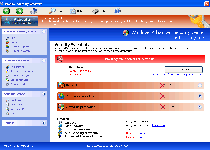 Windows Stability Maximizer is a newborn clone of identical rogue anti-virus scanners under the FakeVimes family's classification. Since this subsection of scamware-derived PC threats includes characteristics such as browser-hijacking attacks, attacks against your security settings and attacks to forbid you of utilizing security-related programs, SpywareRemove.com malware researchers consider Windows Stability Maximizer a mid-level threat to your PC that should be removed without question or hesitation. Pop-up alerts and other information from Windows Stability Maximizer may provide you with unusual and high-level warning messages, but these warnings should be ignored as attempts by Windows Stability Maximizer to scam you into purchasing its fake software, which is just as valueless as its fake trial version. Although appropriate types of anti-malware programs can remove Windows Stability Maximizer and other FakeVimes-based scamware easily, you may also need to make an effort to shut Windows Stability Maximizer down before you'll be able to access suitable security applications.
Windows Stability Maximizer is a newborn clone of identical rogue anti-virus scanners under the FakeVimes family's classification. Since this subsection of scamware-derived PC threats includes characteristics such as browser-hijacking attacks, attacks against your security settings and attacks to forbid you of utilizing security-related programs, SpywareRemove.com malware researchers consider Windows Stability Maximizer a mid-level threat to your PC that should be removed without question or hesitation. Pop-up alerts and other information from Windows Stability Maximizer may provide you with unusual and high-level warning messages, but these warnings should be ignored as attempts by Windows Stability Maximizer to scam you into purchasing its fake software, which is just as valueless as its fake trial version. Although appropriate types of anti-malware programs can remove Windows Stability Maximizer and other FakeVimes-based scamware easily, you may also need to make an effort to shut Windows Stability Maximizer down before you'll be able to access suitable security applications.
How Windows Stability Maximizer Shakes Up Your Finances for the Benefit of Criminals
Windows Stability Maximizer looks similar to legitimate anti-malware software and even seems to include standardized features like automatic updates and system scans along with more unusual functions (most notably, an Advanced Process Control that subverts Task Manager). However, these appearances are all part of Windows Stability Maximizer's plan to provide fake system information, including inaccurate alerts about attacks against your PC, the presence of various PC threats and other security issues that aren't even remotely real. Because following recommendations from Windows Stability Maximizer can lead you to perform self-destructive actions against your computer, SpywareRemove.com malware research team strongly urges you to ignore pop-up alerts and other communications from Windows Stability Maximizer.
While these fake warnings are Windows Stability Maximizer's way of trying to make you buy a registration key, SpywareRemove.com malware experts warn that doing this will not necessarily make your PC safe from Windows Stability Maximizer's security-reducing attacks, which can include system settings changes, browser redirects and even program-blocking functions. The free code '0W000-000B0-00T00-E0020' can be used to fake a registration of Windows Stability Maximizer's software, but this step should always be a mere preliminary along the way to removing Windows Stability Maximizer with a trustworthy anti-malware scanner.
Getting Your Footing Back on Solid Ground After a Windows Stability Maximizer Infection
Windows Stability Maximizer's most visible functions may be focused on getting you to think that Windows Stability Maximizer is a security product, but the full extent of Windows Stability Maximizer's attacks reach to deadlier functions than those that were noted above. Some of the worst issues that SpywareRemove.com malware researchers have found in connection with Windows Stability Maximizer infections include:
- The addition of Registry entries that allow Windows Stability Maximizer to launch automatically and without permission.
- Online search redirects that force your browser to load untrustworthy sites or block safe sites.
- An inability to access security utilities, including popular anti-virus scanners and basic Windows tools like the Task Manager.
- Altered security settings that allow other attacks against your PC to occur more easily than normal, particularly with respect to signature-checking behavior for downloaded files.
In spite of the serious security risk that these attacks cause, SpywareRemove.com malware researchers nonetheless note that Windows Stability Maximizer can be removed by a good anti-malware program without problems, particularly if you disable Windows Stability Maximizer and related PC threats before you try to scan your computer. Similar tactics can also be applied to Windows Stability Maximizer's clones, including Privacy Guard Pro, PrivacyGuard Pro 2.0, Extra Antivirus, Fast Antivirus 2009, Presto TuneUp, Windows Security Suite, Smart Virus Eliminator, Packed.Generic.245, Volcano Security Suite, Windows Enterprise Suite, Enterprise Suite, Additional Guard, Live PC Care, PC Live Guard, Live Enterprise Suite, Security Antivirus, My Security Wall, CleanUp Antivirus and Smart Security.
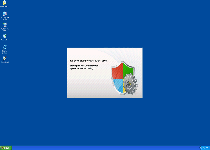
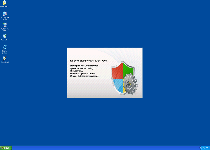
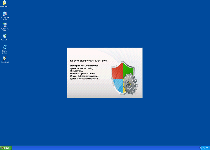
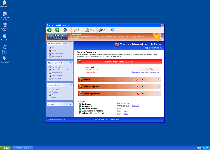
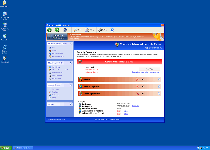
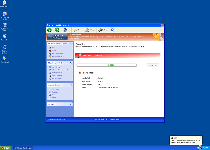
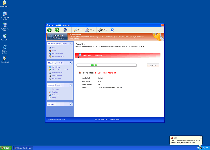
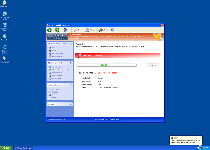
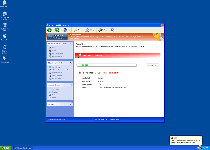
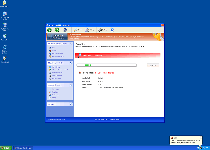
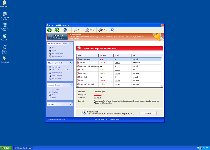
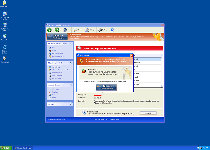
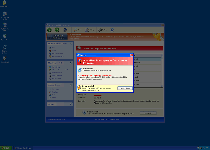
Technical Details
File System Modifications
Tutorials: If you wish to learn how to remove malware components manually, you can read the tutorials on how to find malware, kill unwanted processes, remove malicious DLLs and delete other harmful files. Always be sure to back up your PC before making any changes.
The following files were created in the system:%AppData%\NPSWF32.dll
File name: %AppData%\NPSWF32.dllFile type: Dynamic link library
Mime Type: unknown/dll
Group: Malware file
%AppData%\Protector-<random 3 chars>.exe
File name: %AppData%\Protector-<random 3 chars>.exeFile type: Executable File
Mime Type: unknown/exe
Group: Malware file
%AppData%\result.db
File name: %AppData%\result.dbMime Type: unknown/db
Group: Malware file
%CommonStartMenu%\Programs\Windows Stability Maximizer.lnk
File name: %CommonStartMenu%\Programs\Windows Stability Maximizer.lnkFile type: Shortcut
Mime Type: unknown/lnk
Group: Malware file
%Desktop%\Windows Stability Maximizer.lnk
File name: %Desktop%\Windows Stability Maximizer.lnkFile type: Shortcut
Mime Type: unknown/lnk
Group: Malware file
Registry Modifications
HKEY..\..\{Value}HKEY_CURRENT_USER\Software\Microsoft\Windows\CurrentVersion\Settings "UID" = "vyyralfxdd"HKEY_CURRENT_USER\Software\Microsoft\Windows\CurrentVersion\Settings "net" = "2012-4-8_2"HKEY_LOCAL_MACHINE\SOFTWARE\Microsoft\Windows\CurrentVersion\policies\system "EnableLUA" = 0HKEY_LOCAL_MACHINE\SOFTWARE\Microsoft\Windows\CurrentVersion\policies\system "ConsentPromptBehaviorUser" = 0HKEY_LOCAL_MACHINE\SOFTWARE\Microsoft\Windows\CurrentVersion\policies\system "ConsentPromptBehaviorAdmin" = 0HKEY_CURRENT_USER\Software\Microsoft\Windows\CurrentVersion\Policies\System "DisableTaskMgr" = 0HKEY_CURRENT_USER\Software\Microsoft\Windows\CurrentVersion\Policies\System "DisableRegistryTools" = 0HKEY_CURRENT_USER\Software\Microsoft\Windows\CurrentVersion\Policies\System "DisableRegedit" = 0HKEY_CURRENT_USER\Software\Microsoft\Windows\CurrentVersion\Internet Settings "WarnOnHTTPSToHTTPRedirect" = 0HKEY..\..\..\..{Subkeys}HKEY_LOCAL_MACHINE\SOFTWARE\Microsoft\Windows NT\CurrentVersion\Image File Execution Options\winservn.exeHKEY_LOCAL_MACHINE\SOFTWARE\Microsoft\Windows NT\CurrentVersion\Image File Execution Options\smrtdefp.exeHKEY_LOCAL_MACHINE\SOFTWARE\Microsoft\Windows NT\CurrentVersion\Image File Execution Options\portdetective.exeHKEY_LOCAL_MACHINE\SOFTWARE\Microsoft\Windows NT\CurrentVersion\Image File Execution Options\netmon.exeHKEY_LOCAL_MACHINE\SOFTWARE\Microsoft\Windows NT\CurrentVersion\Image File Execution Options\iedriver.exeHKEY_LOCAL_MACHINE\SOFTWARE\Microsoft\Windows NT\CurrentVersion\Image File Execution Options\clean.exeHKEY_LOCAL_MACHINE\SOFTWARE\Microsoft\Windows NT\CurrentVersion\Image File Execution Options\aswRegSvr.exeHKEY_CURRENT_USER\Software\Microsoft\Windows\CurrentVersion\Run "Inspector"
Additional Information
| # | Message |
|---|---|
| 1 | Error
Trojan activity detected. System data security is at risk. It is recommended to activate protection and run a full system scan. |
| 2 | Warning
Firewall has blocked a program from accessing the Internet C:\program files\internet explorer\iexplore.exe is suspected to have infected your PC. This type of virus intercepts entered data and transmits them to a remote server. |
| 3 | Warning! Identity theft attempt Detected
Hidden connection IP: 58.82.12.124 Target: Your passwords for sites |
Leave a Reply
Please note that we are not able to assist with billing and support issues regarding SpyHunter or other products. If you're having issues with SpyHunter, please get in touch with SpyHunter customer support through your SpyHunter . If you have SpyHunter billing questions, we recommend you check the Billing FAQ. For general suggestions or feedback, contact us.